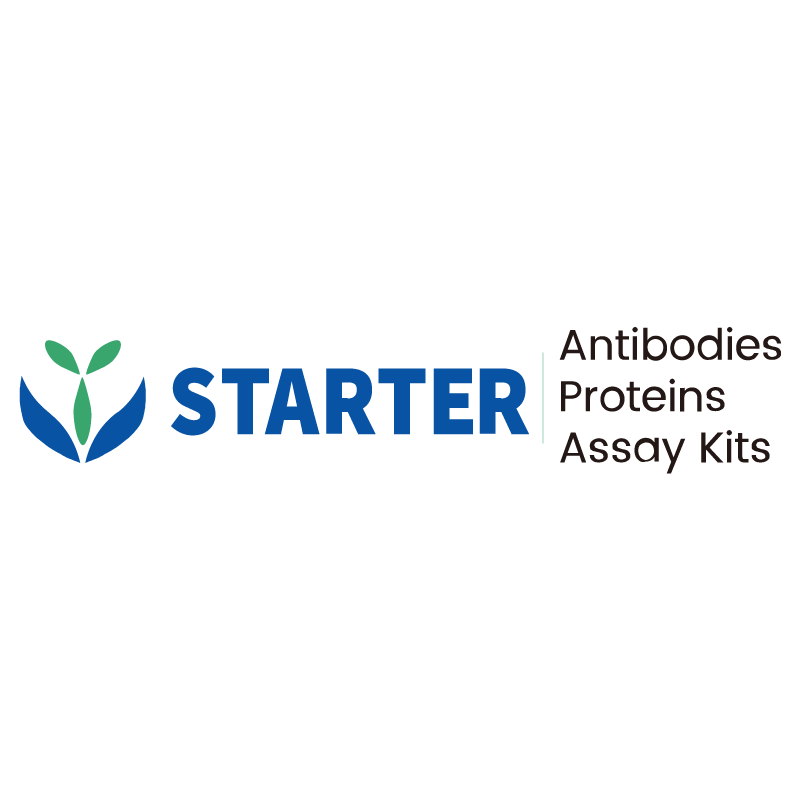WB result of PARP1 Rabbit mAb
Primary antibody: PARP1 Rabbit mAb at 1/1000 dilution
Lane 1: untreated HeLa whole cell lysate 20 µg
Lane 2: HeLa treated with 1 μM Staurosporine for 3 hours whole cell lysate 20 µg
Secondary antibody: Goat Anti-rabbit IgG, (H+L), HRP conjugated at 1/10000 dilution
Predicted MW: 113 kDa
Observed MW: 120 kDa
Product Details
Product Details
Product Specification
| Host | Rabbit |
| Synonyms | Poly [ADP-ribose] polymerase 1, ADP-ribosyltransferase diphtheria toxin-like 1 (ARTD1), DNA ADP-ribosyltransferase PARP1, NAD(+) ADP-ribosyltransferase 1 (ADPRT 1), Poly[ADP-ribose] synthase 1, Protein poly-ADP-ribosyltransferase PARP1, ADPRT, PPOL |
| Immunogen | Synthetic Peptide |
| Location | Cytoplasm, Nucleus |
| Accession | P09874 |
| Clone Number | S-220-179 |
| Antibody Type | Recombinant mAb |
| Isotype | IgG |
| Application | WB, IHC-P |
| Reactivity | Hu, Ms, Rt |
| Predicted Reactivity | Bv, Zf, Hm, Av |
| Purification | Protein A |
| Concentration | 0.5 mg/ml |
| Conjugation | Unconjugated |
| Physical Appearance | Liquid |
| Storage Buffer | PBS, 40% Glycerol, 0.05% BSA, 0.03% Proclin 300 |
| Stability & Storage | 12 months from date of receipt / reconstitution, -20 °C as supplied |
Dilution
| application | dilution | species |
| WB | 1:1000 | |
| IHC-P | 1:250 |
Background
PARP1, short for poly (ADP-ribose) polymerase 1, is an enzyme that plays a pivotal role in DNA repair, maintenance of genomic integrity, and regulation of various metabolic and signaling processes. Discovered over 50 years ago, PARP1 has gradually been recognized for its critical functions in cellular biology. PARP1 catalyzes the transfer of ADP-ribose residues from NAD+ to target substrates, resulting in the formation of a poly (ADP-ribose) (PAR) chain. This PAR modification, known as PARylation, facilitates PARP1's involvement in DNA repair, stabilization of DNA replication forks, and modulation of chromatin structure. The primary functions of PARP1 can be described in four aspects: DNA base excision repair (BER), suppression of transcription from damaged DNA, depletion of cellular energy leading to apoptosis, and participation in transcriptional regulation of certain genes. The loss of PARP1 function has been associated with increased risk of cancers such as breast and lung cancer.
Picture
Picture
Western Blot
Immunohistochemistry
IHC shows positive staining in paraffin-embedded human testis. Anti-PARP1 antibody was used at 1/250 dilution, followed by a HRP Polymer for Mouse & Rabbit IgG (ready to use). Counterstained with hematoxylin. Heat mediated antigen retrieval with Tris/EDTA buffer pH9.0 was performed before commencing with IHC staining protocol.
IHC shows positive staining in paraffin-embedded human tonsil. Anti-PARP1 antibody was used at 1/250 dilution, followed by a HRP Polymer for Mouse & Rabbit IgG (ready to use). Counterstained with hematoxylin. Heat mediated antigen retrieval with Tris/EDTA buffer pH9.0 was performed before commencing with IHC staining protocol.
IHC shows positive staining in paraffin-embedded human cervical squamous cell carcinoma. Anti-PARP1 antibody was used at 1/250 dilution, followed by a HRP Polymer for Mouse & Rabbit IgG (ready to use). Counterstained with hematoxylin. Heat mediated antigen retrieval with Tris/EDTA buffer pH9.0 was performed before commencing with IHC staining protocol.
IHC shows positive staining in paraffin-embedded human ovarian carcinoma. Anti-PARP1 antibody was used at 1/250 dilution, followed by a HRP Polymer for Mouse & Rabbit IgG (ready to use). Counterstained with hematoxylin. Heat mediated antigen retrieval with Tris/EDTA buffer pH9.0 was performed before commencing with IHC staining protocol.
IHC shows positive staining in paraffin-embedded. Anti-PARP1 mouse testis antibody was used at 1/250 dilution, followed by a HRP Polymer for Mouse & Rabbit IgG (ready to use). Counterstained with hematoxylin. Heat mediated antigen retrieval with Tris/EDTA buffer pH9.0 was performed before commencing with IHC staining protocol.
IHC shows positive staining in paraffin-embedded rat testis. Anti-PARP1 antibody was used at 1/250 dilution, followed by a HRP Polymer for Mouse & Rabbit IgG (ready to use). Counterstained with hematoxylin. Heat mediated antigen retrieval with Tris/EDTA buffer pH9.0 was performed before commencing with IHC staining protocol.


